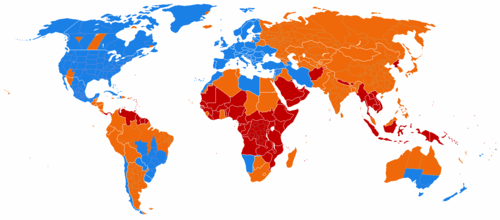Time clock standards
The western time standards dividing the year into 12 months, the day into 24 hours or 12 hours AM and 12 hours PM, the hour into 60 minutes and the hour into 60 seconds derived from the Mesopotamia[1] using the sexagesimal[2] or base 60 numeral system.
- Note:
- The base 60 systems is a highly composite number as 1, 2, 3, 4, 5, 6, 10, 12, 15, 20, 30 and 60 are factors.
The length of a day
Defined in ISO 8601 the day consists of 24 hours consisting of 60 minutes of 60 seconds. giving a total of <math>24 * 60 * 60 = 86400 seconds</math> a day. With the Earth rotation slowing down there are two possible ways to make the clock time match the rotation of the Earth.
- Decreasing the length of the second to match 86400 second/day
- Introducing a leap second[3] when needed.
DST or summer time

Daylight saving time (DST)[4]—also summer time in British English— is the practice of advancing clocks during the lighter months so that evenings have more daylight and mornings have less. Typically clocks are adjusted forward one hour near the start of spring and are adjusted backward in autumn.